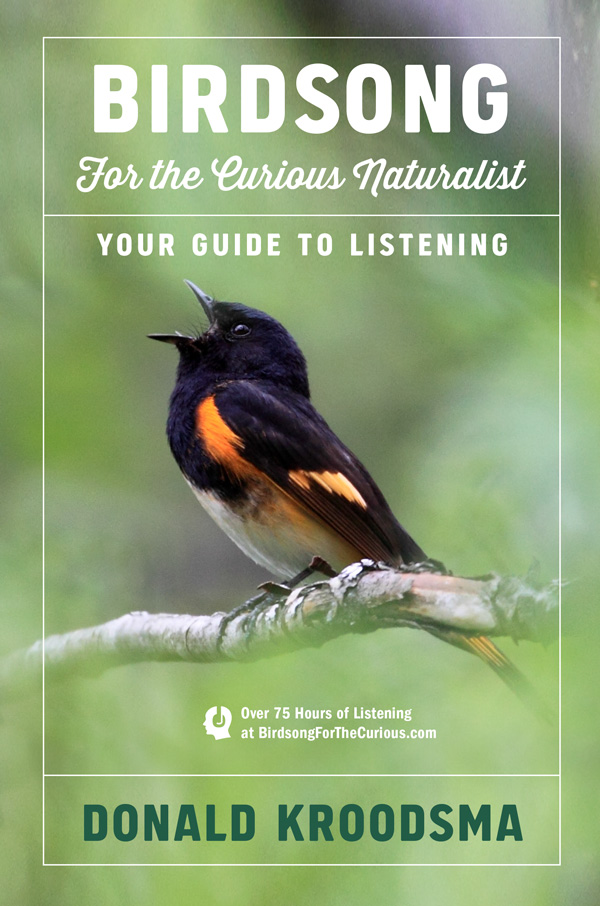9. Singing from the nest by cardinals and grosbeaks.
2. Birds and Their Sounds
Female song and duets
From page 21 in the book.
Singing from the nest by cardinals and grosbeaks. How fascinating that the female northern cardinal and both the male and female rose-breasted (and black-headed) grosbeaks sing from the nest while incubating or brooding the young! Why?, one inevitably asks. Wouldn't their singing reveal the nest's location to predators? Some communicative advantage must outweigh the costs.
Find a nest of one of these species and settle comfortably nearby, far enough away of course that you don't disturb the nesting birds. Cardinal nests are most easily found by following the female, who chips like a Geiger counter as she returns to the nest. Grosbeak nests may be most readily found by listening to the male singing from a constant location over several minutes, often well-hidden in low bushes.
Questions abound: When does the female cardinal sing from the nest? Only or primarily when the male is nearby? Does he then come to the nest, perhaps to deliver food? Does he chip, or sing? If he sings, do they match each other's songs (see page 59)? And how about the grosbeaks? When does the female sing? By herself, with the male out of earshot, or only with the male nearby, perhaps signaling that she would like or at least anticipates relief, with him taking over nest duties while she takes a break? And just listen to him sing from the nest! Be forewarned: Not all pairs behave the same. I have settled in next to two rose-breasted grosbeak nests; the male and female were highly vocal at one nest, but relatively silent at the second. Again: Why?
